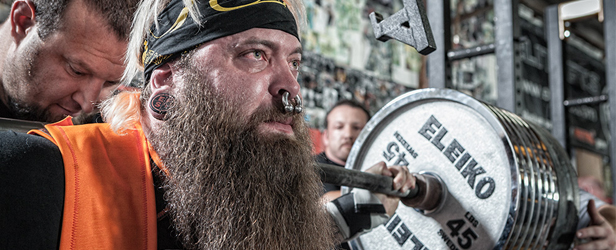
The first four weeks of training for a meet for me prove to be the most physically demanding of my whole 12-week training cycle. There is not a whole lot of room for the break pedal. It's twelve straight sessions of max effort work without a break or deload. I know its going to be the most painful part of my cycle, but I know that its only going to be four weeks and it will help my overall performance in gear once I get to meet day. I've already shared what I do for month one of meet prep, so now let's talk about month two.
Week five is where my bench, and squat/deadlift training start to wonder on separate paths. I have different needs as far as training in my bench shirt than I do with squat or deadlift. Squat and deadlift still follow a similar pattern. Bench skews off on its own a little. It took me years to figure out that its okay to have some deviation between the way I train each lift. As a lifter, you need to pay attention to what does and does not work, even if what works is a little taboo in regards to the rest of the powerlifting community. The relentless grind of heavy ass raw lifting is behind you now; its time to put on some gear. But this just means that you are going to start lifting a lot heavier weights. Even though your reps will be lower and the gear will absorb a lot more of the pressure, you are still shocking the body with heavier weights — trading in one pain for another.
Goals of Month Two
There are several things I try to accomplish in month two:
- Add in gear but in limiting amounts. For example, for squats you are only using your briefs, or in the case of someone just using a suit you will only be straps down. Same goes for your deadlift. Bench will take a little different route. Keep reading and I'll explain.
- ME doubles: you will be working up to your heaviest double on that particular day. Your goal the next week is to beat that, even if only by five pounds.
- Get stronger with as little help from gear as possible. Not only am I progressively overloading my body via the weights, I am progressively adding gear little by little. I realistically only have about two or three training sessions in full-blown, straps-up gear. I think it is extremely important to get as strong as possible with as little amount of gear as you can.
- Learn your gear! I don't care what anyone tells you, there is no such thing as “winging it” on meet day. Your squats should be to depth, deadlifts locked out, benches touched in shirts. I cannot think of a better example of this than one of powerlifter I grew up idolizing: Jeremy Frey. If you train like a machine, you will perform like a machine.
Bench
I told you I would explain the bench, and now I am. This is where things get a little more complex:
You will still be stuck doing triples for a few weeks. Yes, yes, I know. You just got done doing triples for the last four weeks, but this will be different; these will not be ME triples. The whole purpose of doing triples for you is to learn your shirt. Reps, time under tension, habit, and persistence — that's how you learn how to use a bench shirt. I am not going to get into how to bench in your shirt because that just opens up a whole new issue that I don't feel like getting into.
You are going to want to warm-up adequately. You will be putting your shirt on with light weight. For example, my best raw bench is 500 pounds, but my every day ME bench would be closer to 440 pounds. I will put my shirt on around 545 or even 500 some days. Plan your shirted sets somewhat around my example. I don't have a set number of sets that I do in my shirt but it is usually around the 4-6 set range.
Every set, lower the bar till the shirt binds up, then press back up. Next rep try and take it a little lower than press. Third rep should be the lowest. No Boards! I am trying reinforce the fact that you can touch very light weight in the same shirt you use to hit maximal weight. I have touched 500 pounds in the same shirt I benched 700 pounds in. Become a technician and learn your weapon.
You should be able to touch around your fourth or fifth set. If you can touch right away on your first set then you started in your shirt too heavy. The main goal is to learn your shirt and touch with as light as weight as possible. My goal in a meet for bench (well, one of them) is to not be concerned at all about whether or not I will be able to touch.
Main Lift — Bench Triples (Shirted)
Listen to your body. I can usually go three weeks in my shirt before I need a week out. In that week out, I work on bodybuilding type movements and flood the area with blood to improve recovery.
Second Lift
Something geared towards making your lockout amazing! There's floor presses, pin presses, board presses, etc. This is going to be about a five-rep range. Some of my personal favorites include raw four-board, close grip, against heavy band tension and super heavy four-board in shirt. I also like floor presses with chain and catapult.
Third Lift
Heavier triceps movement, rep ranges are usually around the 12-rep range. Some of my favorites include skullz (against a light band), close grip floor press with DB, or Kennellys (rolling skulls with DB).
Fourth Lift
This movement is all about blood flow and hypertrophy. Rep range is usually up near twenty. It's either a triceps movement or a rear delt movement depending on how I feel. Favorites include cable press down, band press down, band kick back, face pull, and DB rear delt.
Fifth Lift
Abs. always end with abs. Four sets of 20 with any exercise of your choice. Doing something is better than nothing. My rule of thumb with abs is if its harder, its better. I usually try to do a more demanding exercise. Examples: hanging leg raise, sit ups on GHR, or standing crunches against resistance.
Squats
There are going to be a lot of similarities between squat and deadlift training. They will be ME doubles, and they both will be in briefs only. If you're in a single suit then straps down only. For the sake of learning my gear and adjusting to the pressure I will usually throw my suit on over my briefs, straps down, towards the end of week three or week four. My belief is that if I can squat heavy ass weight with out the aid of my straps(aiding in torso stability), when it comes to handling the heavier weights straps up I will be that much stronger. I always to try to hit as heavy number as possible in just my briefs or briefs and suit straps down. Always try to hit depth on squats, even on the lighter weights. You need to train like a machine to compete like one.
Main Lift — Squat Doubles
Squat in briefs or straps down. Try to beat the weight from the week before.
Second Lift
I try to keep my secondary movement a barbell movement, which will apply to all three main lifts. I have always tried to mimic compromising situations. One of my favorite examples of how I developed my secondary lifts was watching one of my powerlifting idols, Chuck Vogelpohl. I remember watching his 1150@275 world record squat and remember seeing him lose the squat forward, but he still had the brute strength to stop it, put it back and finish the squat. I wanted that. I wanted to be able to save a lift even if I came into a comprising position. My cure for that was good mornings. My go to and favorite second movement for squat has usually been good mornings. It eventually ended up being hanging good mornings. I use a variation of stance widths, bar starting heights, and straight weight or heavy band tension. Rep range is five and sets are anywhere from four to six.
Third Lift
Hip and lower back emphasis. Pull throughs are my favorite. Four sets of 12.
Fourth Lift
Hamstring emphasis. If I am feeling like super man, its four sets of 12 with GHR. If I am feeling like a turd its hamstring curls for four sets of 15.
Remember: always end with four sets of 20 abs.
Deathlift
This lift is mostly going to be the same as squat was. Because you're training a lot of the same muscles and doing a similar movement, I like to train these almost identical to squats with the only main change being exercise selection.
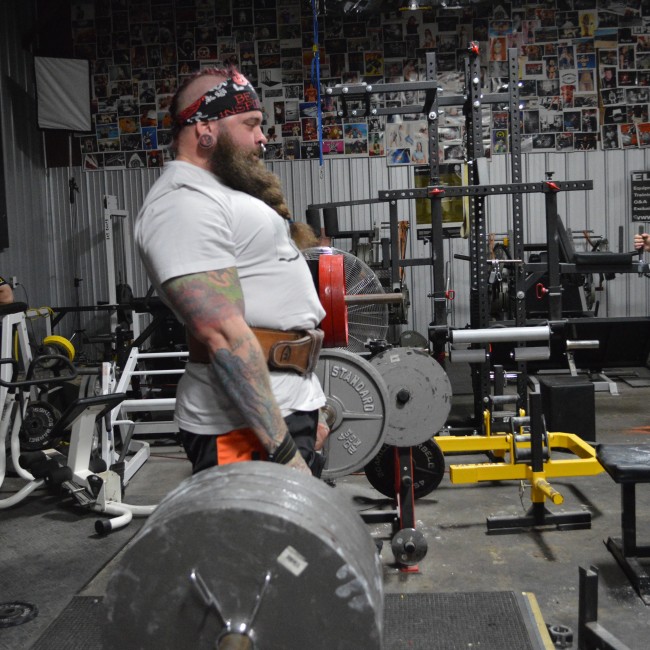
Main Lift — Deathlift Doubles
ME doubles in just briefs and or straps down. Again, try to beat the previous weeks double.
Second Lift
My absolute favorite secondary lift for deathlifts are rack pulls below the knee. Four sets of five either straight weight or against heavy ass band tension really build my deathlift. I like to rotate straight weight and heavy tension. I am not a fan of rack pulls above the knee because it is to easy to squat the weight up. If you keep the bar below your knee, you are still mimicking the movement. I know that people like Steve Goggins swears by rack pulls above the knee. and how the hell are you gonna argue with Goggins? You can make up your own mind, this is just what I have found to work for me.
Third Lift
I make myself do GHR regardless of how unmotivated I am. There is just too much carry over to skip GHR. Even though I would rather fart shattered glass dipped in red hot, I do four sets of 12.
Fourth Lift
Hamstring curls for four sets of 15.
I then finish with four sets of 20 for abs, like any other day.
This wraps up your second four-week wave of training, putting you at eight weeks and leaving four weeks till your meet. At eight weeks you should be very confident in touching your bench shirt with light weights. You should have hit a heavy double in just your briefs on squat. If you wear a suit then you will have also hit a heavy double with your suit on, straps down. Deadlifts as well, you should have hit a heavy double straps down.
This program is what I did for the first four years of training. It is very basic, as your training should be for a long time. You will become very strong doing the basics that build strength. I currently run a program very similar, but I have tweaked it to suit my needs. This basic template is the place to start with every training program.









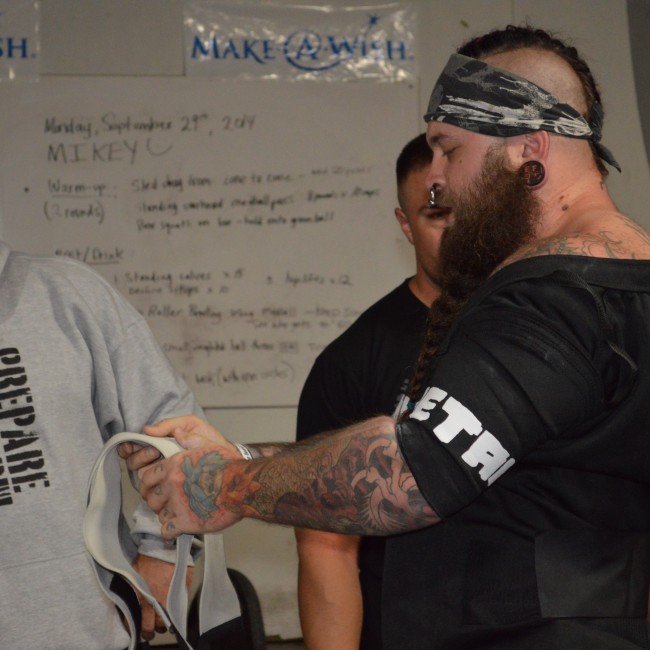
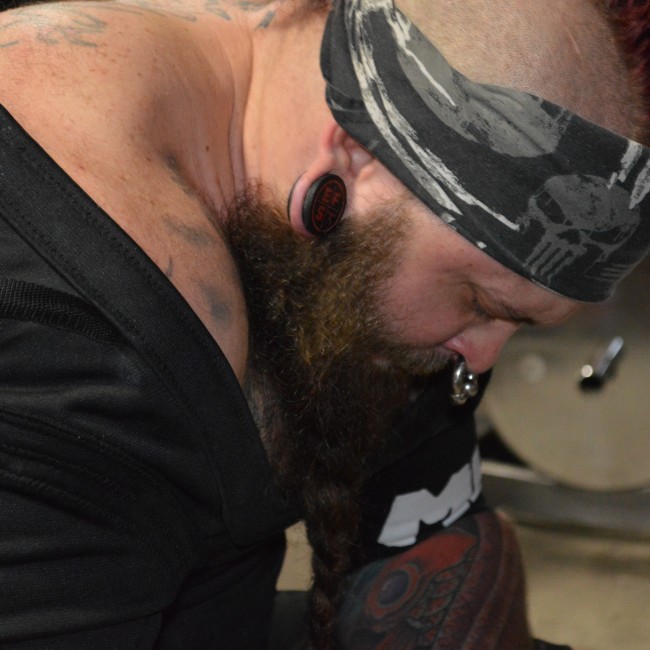
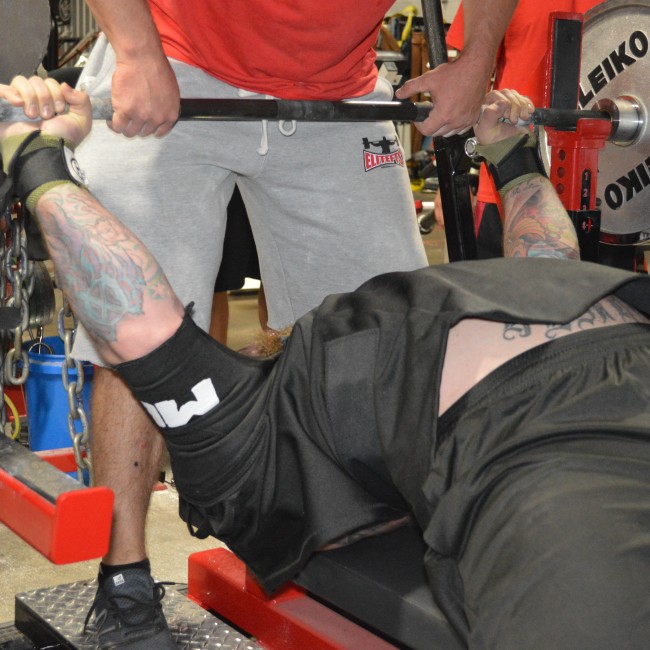
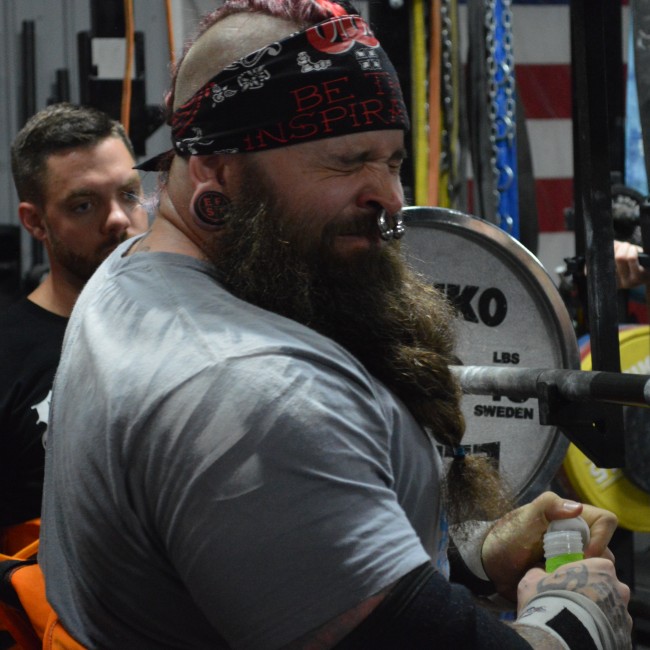

2 Comments